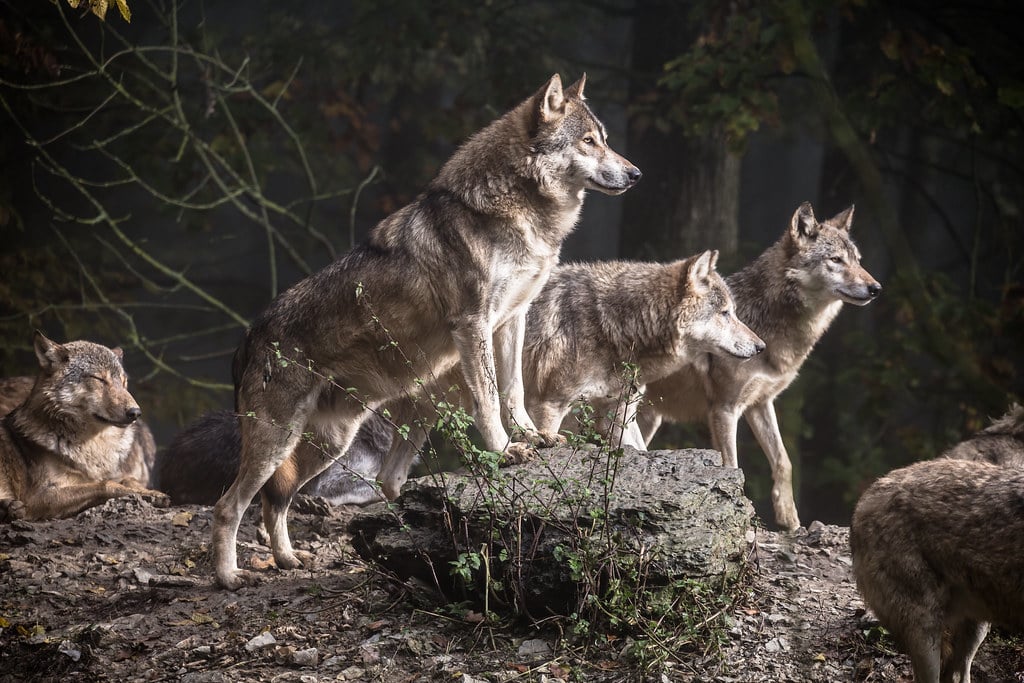Wolf packs operate as highly organized family units with complex social dynamics. Traditionally described as having a rigid alpha-beta-omega hierarchy, modern research reveals a more nuanced reality: most wild wolf packs are actually family groups consisting of a breeding pair (the parents) and their offspring of various ages. This breeding pair naturally assumes leadership positions not through aggressive dominance but through their parental role and experience. Their offspring typically remain with the pack for 1-3 years before potentially dispersing to establish their own territories and packs.
The family-based structure creates natural stability, but this doesn’t mean wolf packs are free from tension. Even in these family units, individuals fulfill different roles, with some wolves being more assertive, others more submissive, and some acting as mediators during conflicts. As young wolves mature or when unrelated wolves occasionally join an established pack, the delicate balance of the social order can be disrupted, potentially triggering power struggles that test the cohesion of the entire group.
Triggers for Power Struggles
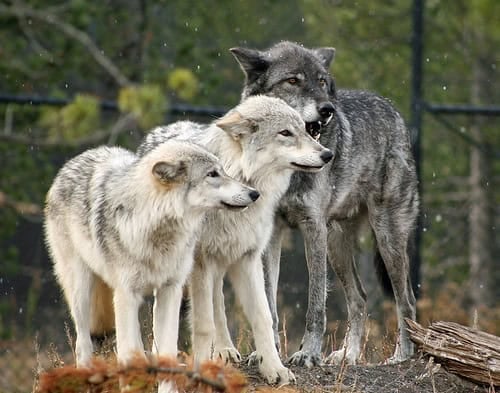
Several situations can ignite power dynamics within a wolf pack, with most revolving around significant changes to the pack’s structure or circumstances. The death or weakening of a breeding wolf creates an immediate leadership vacuum that often leads to competition among eligible pack members. During these transitions, the second-ranking wolves may challenge for the vacant position, or outside wolves might attempt to join and claim leadership. Another common trigger occurs when adolescent wolves reach sexual maturity, particularly males who may begin testing boundaries with the breeding male.
Environmental pressures can also catalyze power struggles. During times of resource scarcity, such as harsh winters with limited prey, tension within the pack naturally increases as competition for food intensifies. Territory disputes with neighboring packs may similarly escalate internal stress, sometimes redirecting aggression inward. Additionally, the introduction of new members through pack mergers can drastically alter the established order, forcing a renegotiation of status among all wolves as they adapt to the new social landscape.
Early Signs of Tension
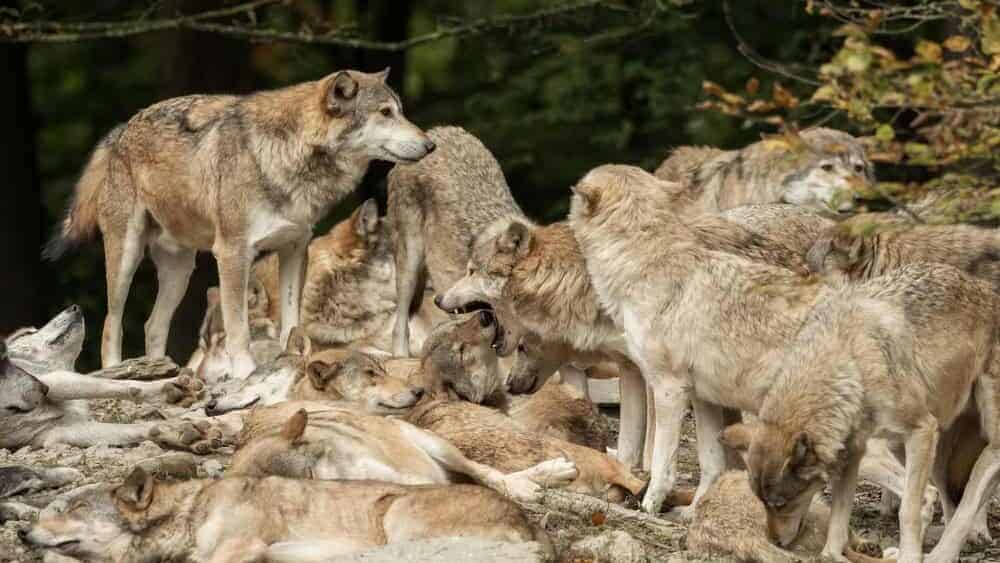
Before a full-blown power struggle erupts, observant wolf researchers can detect subtle behavioral changes indicating rising tension. Body language becomes increasingly significant, with challenging wolves holding their tails and heads higher, maintaining direct eye contact for longer periods, and displaying a stiffened, forward-leaning posture. Wolves sensing their position might be threatened may respond with more frequent scent-marking behaviors to reinforce their status and territorial claims, particularly around essential resources or boundaries.
Vocalization patterns also shift during pre-conflict periods. Researchers note increased growling during otherwise routine interactions like feeding, and changes in howling patterns may emerge, with challenging wolves attempting to howl over or interrupt the breeding wolves. Social interactions become visibly strained, with formerly relaxed grooming sessions giving way to more tentative approaches and briefer physical contact. Pack members often become hypervigilant, showing heightened reactivity to minor provocations that would previously have been ignored, signaling the deteriorating social stability within the group.
Ritualized Aggression and Displays
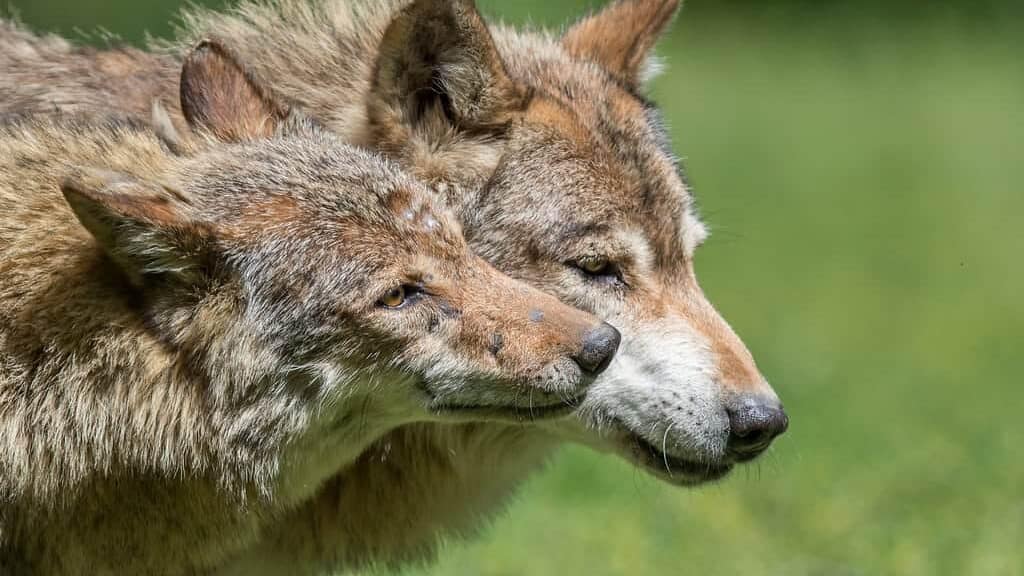
Wolf power struggles rarely begin with outright violence, instead following a graduated series of ritualized behaviors designed to establish dominance while minimizing serious injury. These displays serve an important evolutionary purpose, allowing wolves to resolve conflicts without deadly consequences that would harm the pack’s collective survival chances. The challenging wolf typically initiates with assertive posturing – standing tall with raised hackles, ears forward, and tail held high while directly facing the higher-ranking wolf.
If initial posturing doesn’t resolve the tension, the display escalates to include “t-posturing,” where wolves stand perpendicular to each other with their heads facing opposite directions, each attempting to place their head or neck over the other’s shoulders to establish physical dominance. Teeth-baring, growling, and air-snapping follow, creating increasingly intense confrontations that remain largely symbolic. These ritualized behaviors can continue for days or even weeks, with repeated interactions that may look violent to casual observers but typically involve calculated restraint that prevents serious injuries while allowing both wolves to assess their opponent’s determination and strength.
Physical Confrontations
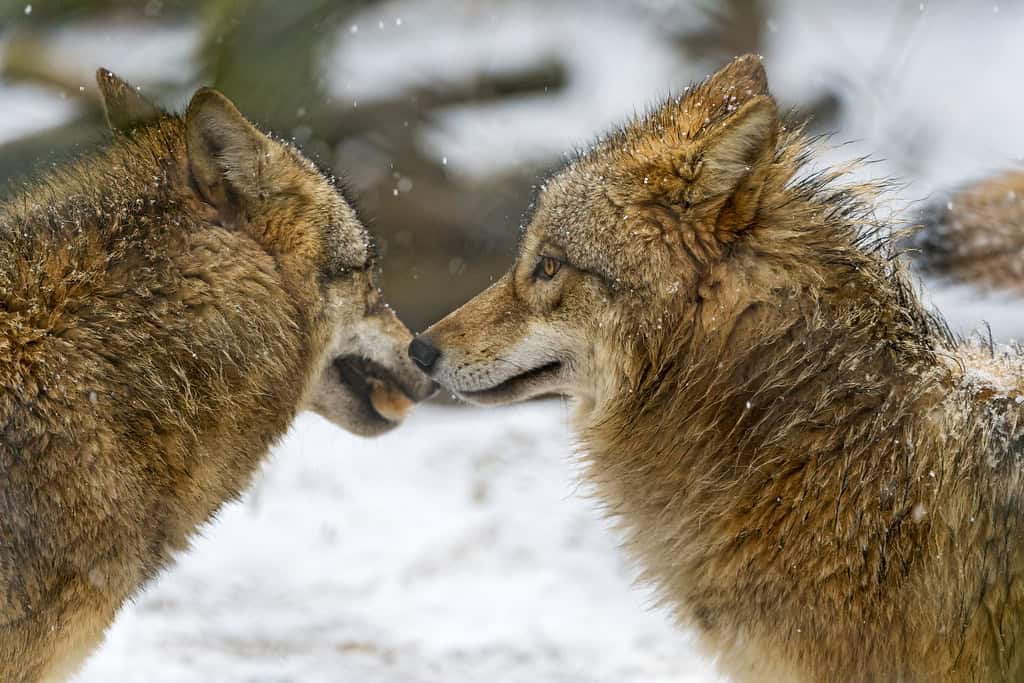
When ritualized displays fail to resolve the conflict, physical confrontations may occur, though these remain surprisingly controlled compared to the wolves’ predatory capabilities. These confrontations typically involve wrestling matches where opponents attempt to pin each other to the ground, with the dominant wolf positioning itself above the subordinate. Biting during these encounters is usually inhibited, targeting the face, neck, and legs but without the full crushing force wolves use when hunting prey. These physical contests can be dramatic, with loud vocalizations, rolling, and dust clouds, but rarely result in life-threatening injuries.
The duration and intensity of physical confrontations vary widely based on how evenly matched the competitors are and how much is at stake. Conflicts between unrelated wolves or over breeding rights tend to be more intense than those between siblings jostling for rank within the family hierarchy. Other pack members frequently monitor these confrontations closely but seldom intervene directly unless the fighting becomes excessively violent. Instead, they may display stress behaviors such as pacing, whining, or attempting to distract the combatants through play solicitations, demonstrating the pack’s collective interest in maintaining group cohesion even during leadership contests.
The Role of Coalitions and Alliances

Power struggles rarely remain strictly one-on-one affairs, as wolves strategically form coalitions that significantly influence outcomes. Close siblings often support each other during conflicts, standing together when challenging older pack members or defending against outsiders. These alliances create complex social dynamics where direct strength becomes less important than relationship networks within the pack. Researchers have observed that wolves with strong social bonds throughout the pack—those who regularly engage in grooming, play, and hunting cooperation with multiple members—typically receive more support during conflicts than physically stronger but socially isolated individuals.
The breeding female plays a particularly influential role in coalition formation. Her support often proves decisive in male power struggles, as she may back her current mate against challengers or, conversely, support a new male if the current breeding male weakens. Interestingly, older non-breeding females sometimes serve as mediators during conflicts, intervening between fighting wolves with appeasement behaviors that help de-escalate tensions. These complex alliance dynamics highlight that wolf pack leadership isn’t determined by physical dominance alone but through a sophisticated social calculus involving relationships, experience, and the collective needs of the pack.
Resolution and New Hierarchy Establishment

Most power struggles conclude not with a decisive physical victory but through accumulated social pressure that eventually causes one contestant to yield. The submission typically involves clear physical signals: the yielding wolf rolls onto its back, exposing its vulnerable underside, tucks its tail, flattens its ears, and may whimper or lick at the muzzle of the victor. This formal surrender usually marks the end of active conflict, though subtle tension may persist for days or weeks afterward. Once established, the new hierarchy is reinforced through regular but minor dominance displays during feeding, resting, and travel, with subordinate wolves acknowledging leadership through consistent deferential behaviors.
The post-conflict period involves a pack-wide recalibration as all members adjust to the new power structure. Wolves closely aligned with the defeated challenger may temporarily experience reduced status, while the victor’s allies gain prestige. Importantly, defeated wolves rarely leave the pack immediately following power struggles unless they were unrelated joiners. Instead, family members typically remain with the group but accept a lower position, continuing to contribute to hunting and territorial defense. This retention of experienced members, even after conflict, represents an evolutionary advantage for wolves, as it preserves the pack’s collective knowledge and hunting capabilities despite the leadership transition.
Impact on Pack Dynamics and Survival

Power struggles significantly affect overall pack functioning, with both immediate and long-term consequences for survival. In the short term, ongoing conflicts divert energy and attention from vital activities like hunting and territorial patrolling, potentially reducing the pack’s food acquisition and security. Packs experiencing prolonged leadership disputes show measurable decreases in hunting success rates and may temporarily contract their territorial boundaries as they focus inward on resolving internal tensions. Additionally, stressed wolves experience physiological changes, including elevated cortisol levels that can compromise immune function, making the entire pack more vulnerable to disease during periods of social instability.
However, successful resolution of power struggles can ultimately strengthen the pack by ensuring the most capable leaders assume control. When aging or injured leaders are replaced by stronger, more energetic wolves, the entire group often benefits from improved hunting success and territorial defense. Research tracking packs before and after leadership transitions shows that after an initial adjustment period of 2-3 months, successfully reorganized packs typically demonstrate improved coordination during complex hunting maneuvers and more effective responses to territorial intrusions. This evolutionary mechanism helps ensure wolf packs remain adaptive and resilient despite the inevitable changes that occur over time.
Breeding Rights Contests

Among all power struggles, contests for breeding rights generate the most intense conflicts within wolf packs. Access to reproduction represents the ultimate evolutionary prize, making these conflicts fundamentally different from disputes over feeding order or travel positions. In established packs, when the breeding male weakens or dies, mature male offspring may compete with each other or with outside males who detect the opportunity. These confrontations feature heightened aggression, with less ritualization and more potential for serious injury as the stakes involve genetic legacy rather than merely social position. Similarly, when the breeding female becomes unable to reproduce, mature daughters or outside females may compete for her position.
The timing of breeding rights contests follows seasonal patterns, intensifying during the pre-breeding season from November through January, when hormonal changes prepare wolves for the February mating season. Researchers have documented that packs with multiple mature females often experience “reproductive suppression,” where the dominant female releases pheromones that can physiologically prevent subordinate females from entering estrus. However, during power transitions, this suppression may fail, resulting in multiple females becoming receptive simultaneously and triggering intense competition among males. The resolution of breeding rights contests fundamentally reshapes the pack, as new breeding pairs often reorganize the group’s activities and decision-making processes according to their preferences and priorities.
Dispersal as an Alternative to Conflict

Not all potential power struggles culminate in direct confrontation, as wolves have evolved an alternative strategy: voluntary dispersal from the natal pack. Typically occurring when wolves reach 1-3 years of age, dispersal serves as a pressure release valve for brewing tensions. Maturing wolves, particularly males sensing limited advancement opportunities within their birth pack, often leave voluntarily before serious conflicts develop. This natural dispersal mechanism helps prevent excessive intra-pack aggression while promoting genetic diversity as wolves establish new territories and potentially form new packs elsewhere.
The timing of dispersal often correlates with social tension indicators, with researchers noting that wolves showing early signs of conflict with pack leaders are more likely to leave during the next dispersal window (typically fall or early winter). Some wolves travel remarkable distances during dispersal—GPS collar data has tracked individuals journeying over 500 miles from their natal territories. While risky, as lone wolves must hunt independently and navigate territorial boundaries of established packs, successful dispersers who find mates and establish new territories avoid the costs of direct confrontation with larger, more experienced pack members while gaining reproductive opportunities they might never have secured in their original pack.
Human Observation and Research Methods

Our understanding of wolf power struggles has evolved dramatically thanks to advances in research technology and methodology. Early observations relied heavily on studying captive wolves, which led to overemphasizing dominance hierarchies and aggression. Modern research employs less invasive techniques to study wild populations, including GPS collars that track movement patterns and reveal how wolves may temporarily separate from the pack during periods of tension. Remote cameras at den sites, feeding locations, and territory boundaries provide thousands of hours of unobtrusive observation, allowing researchers to document natural behaviors without human presence altering wolf interactions.
Perhaps most valuable has been the long-term monitoring of identified individuals and packs over multiple generations, particularly in places like Yellowstone National Park and Isle Royale. These multi-decade studies reveal patterns invisible to short-term observation, such as how power transitions differ between stable and newly formed packs, or how experience with previous conflicts influences wolves’ strategies in subsequent challenges. Biological sampling adds another dimension, with hormonal analysis from scat and hair samples revealing physiological stress responses during power struggles and genetic testing confirming how leadership changes affect subsequent breeding outcomes. This comprehensive approach has transformed our understanding of wolf social dynamics from simplistic dominance models to appreciation of their complex, adaptive social structures.
Conclusion: The Evolutionary Significance of Wolf Power Dynamics
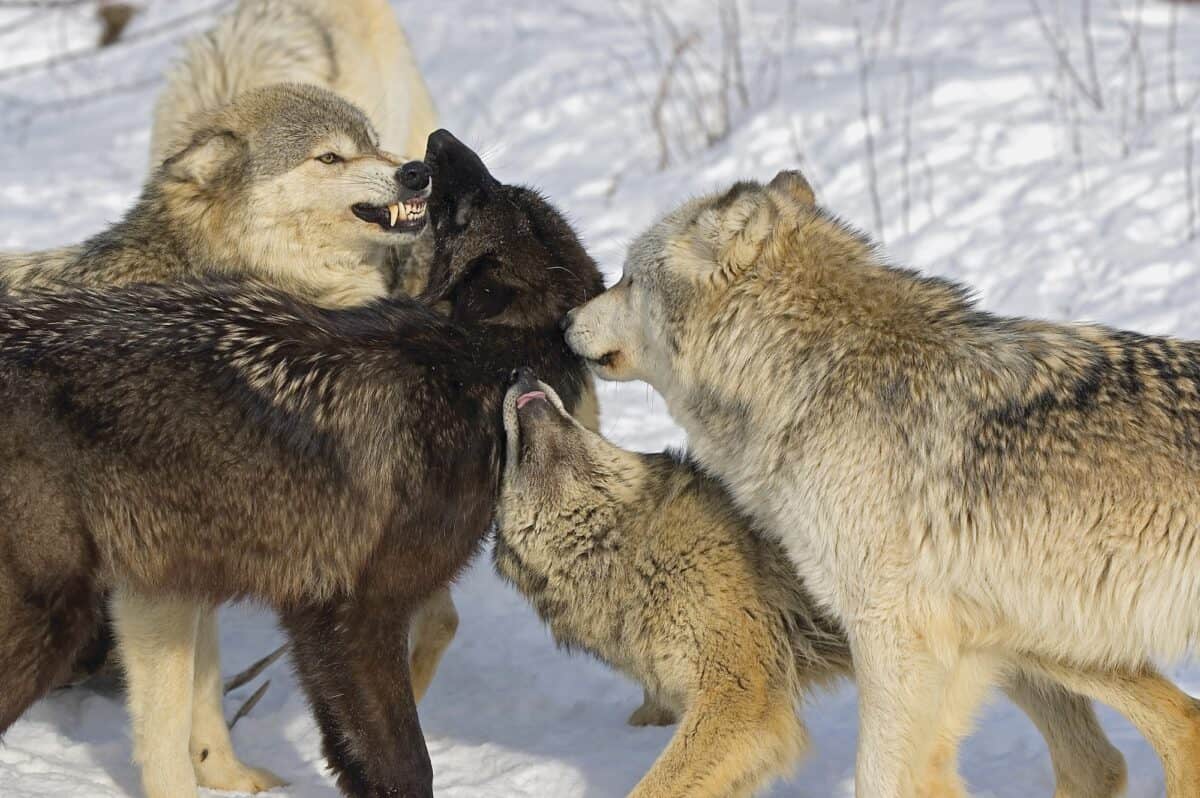
Wolf pack power struggles represent a sophisticated evolutionary mechanism that balances individual ambition against group cohesion in ways that ultimately strengthen the species. These conflicts, while potentially disruptive in the short term, ensure that wolf packs remain adaptively led by individuals capable of making effective decisions about hunting, territory defense, and pup-rearing. The remarkable aspect of these power transitions is not the conflict itself but rather how consistently wolves resolve potentially deadly disputes through graduated signals and displays that minimize serious injury while clearly establishing new leadership.
These complex social negotiations demonstrate that wolves possess significant social intelligence, reading and responding to subtle behavioral cues while maintaining awareness of the broader pack dynamics. The ritualized nature of most conflicts, combined with the pack’s collective interest in maintaining functional cohesion, highlights how natural selection has favored conflict resolution mechanisms that preserve the pack’s hunting capacity and territorial integrity even during leadership changes. For conservation efforts, understanding these natural transitions is crucial for managing wolf populations, as disruptions to pack structure through hunting or habitat fragmentation can trigger abnormal power dynamics with cascading effects on reproduction and survival.
Ultimately, wolf power struggles remind us that social complexity isn’t uniquely human but represents an evolutionary solution to group living that has emerged independently across species. By studying how wolves navigate their social challenges, we gain insight not only into their fascinating lives but also into the fundamental evolutionary pressures that have shaped social behavior across the animal kingdom. As we continue to refine our research methods and accumulate longer-term observational data, our appreciation for the sophistication of wolf social structures will undoubtedly continue to deepen.
- What Happens During a Wolf Pack Power Struggle - August 9, 2025
- The Most Unexpected Snowfalls in Hot Regions - August 9, 2025
- How Squirrel Monkeys Use Teamwork to Avoid Predators - August 9, 2025

